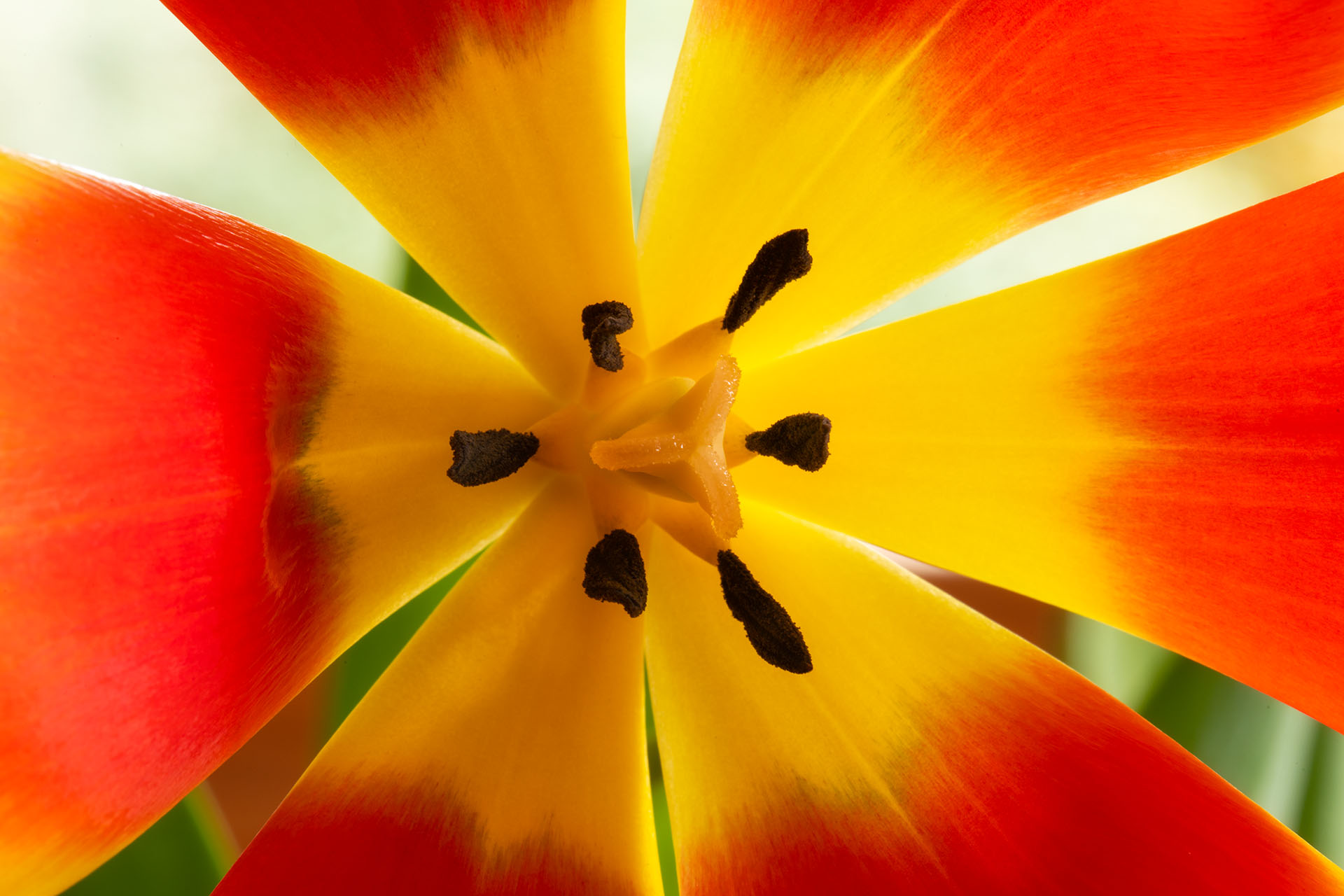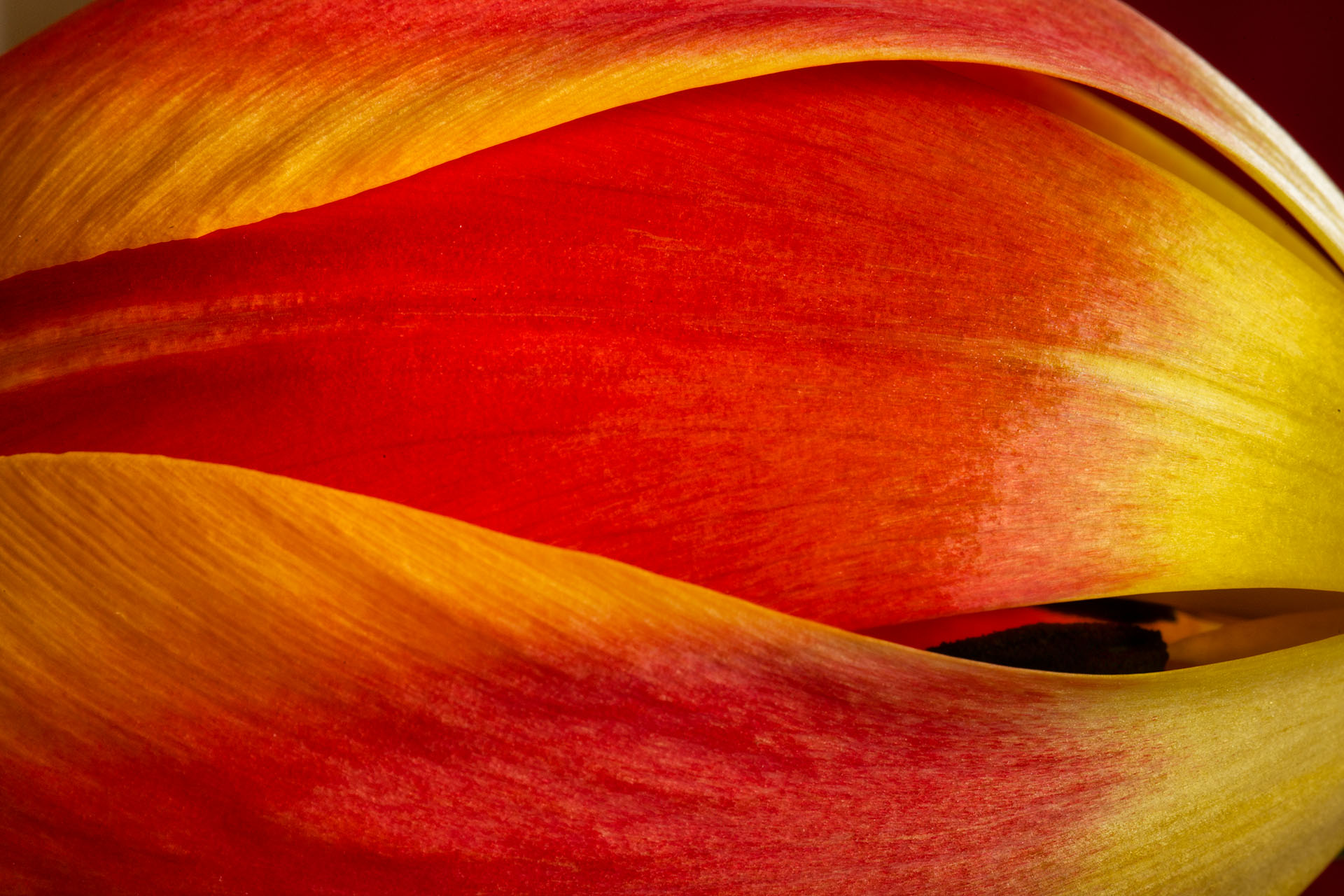An important question when looking at a photo is, What is this photo about? In the case of an image of a single flower blossom, likely candidates depend where the image is on the documentary straight photo to would-be high-art spectrum. The photo could be intended as an illustration in a horticultural catalog, or it could be about shape, form, and gesture—with nothing to do with the literal subject matter.

The photo above, Tulip Sun, is about a feeling: the bright, warm, and sunny feeling some of us get when looking at a beautiful and colorful flower. Tulip Eye, below, is a double-take narrative. What is inside the flower? Suppose it were peeking out at us?

I like to understand what my photos are about, at least for me, as early as possible in the image-making process. Sometimes I am lucky enough to know this before I press the shutter release, but more often not. It’s good to know what direction the image is going early in post-production (if not sooner). Otherwise, implementing my vision is difficult, because it is hard to implement something one does not understand.
As a coda to this discussion, there’s no reason that my idea of what one of my photos is about should be your idea. It’s not necessarily that I have failed if my vision is not conveyed. As one example, some photographic imagery is intentionally conceived as a projective device, or Rorschach: the viewer reads into the image what they have brought to it. And, of course, a photo can be about more than one thing, just as it can work on several levels—encompassing, for example, formal composition as well as narrative feeling.